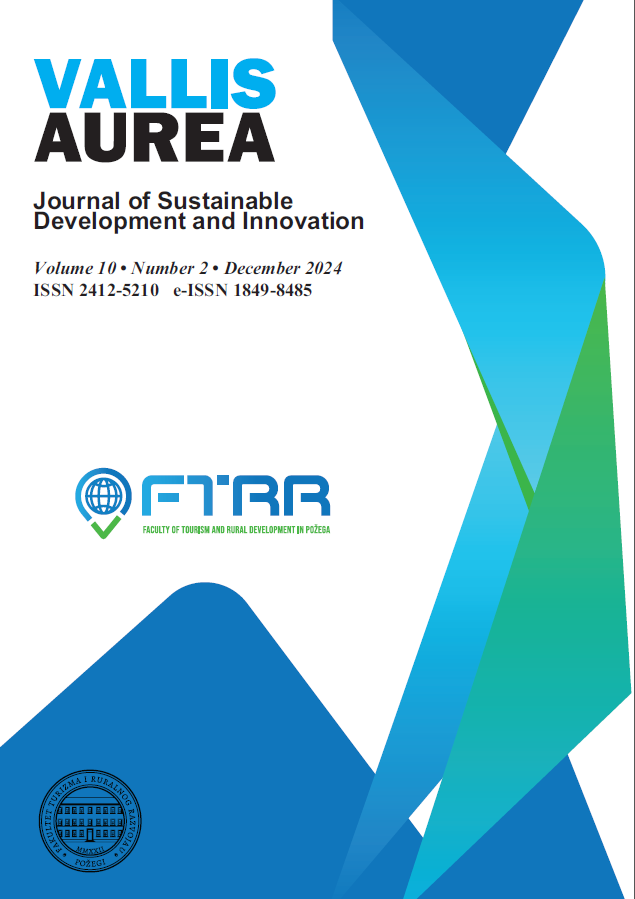Financial Inclusion and Household Wellbeing in Sub Saharan Africa
DOI:
https://doi.org/10.62598/JVA.10.2.1.6Keywords:
financial inclusion; household; minority; wellbeingAbstract
This study provides evidence of the power of financial inclusion (access, quality and usage) on household wellbeing using data from teachers in primary schools of central and western Uganda. By means of a questionnaire approach to collect data, the study adopted a cross-sectional research approach. 326 respondents were responsive from a sample of 377 which yielded 86.5% response rate. Quantitative data were analyzed using Statistical Program for Social Sciences (SPSS) and Analysis of Moment Structures (AMOS). Drawing on the survey results, the paper clearly demonstrates that financial inclusion underpinned by minority influence theoretical lenses informs household wellbeing significantly in Uganda.
References
1. Ahmad, A. H., Green, C. J., Jiang, F., & Sakyi-Nyarko, C. (2020). Finance and well-being in developing countries: Does access to mobile money improve household well-being? Loughborough University.
2. Ajefu, J. B., Demir, A., & Haghpanahan, H. (2020). The impact of financial inclusion on mental health. SSM-population Health, 11, 100630.
3. Bandura A (1986). Social Foundations of Thought and Action: A Social Cognitive Theory. Englewood Cliffs, NJ: Prentice-Hall.
4. Baye, F. M. (2013). Household Economic Well‐being: Response to Micro‐C redit Access in Cameroon. African Development Review, 25(4), 447-467.
5. Birkenmaier, J., & Fu, Q. (2018). Household financial access and use of alternative financial services in the US: two sides of the same coin? Social Indicators Research, 139, 1169-1185.
6. Bourdieu, P. (1986). ‘The Forms of Capital’, in Richardson, John G., ed., Handbook of Theory and Research for the Sociology of Education, New York: Greenwood.
7. Burrell, G. and Morgan, G. (1979), Sociological paradigms and organizational analysis, London, Heinemann.
8. Cnaan, R. A., Moodithaya, M., & Handy, F. (2012). Financial inclusion: Lessons from rural south India’. Journal of Social Policy, 41(1), 183–205. doi:10.1017/S0047279411000377.
9. Creswell, J. W. (2009). Research design: Qualitative, quantitative, and mixed methods approaches (3rd Ed.). Thousand Oaks, CA: Sage
10. Demirgüç-Kunt, A., Klapper, L. F., Singer, D., & Van Oudheusden, P. (2015). The global findex database 2014: Measuring financial inclusion around the world. World Bank Policy Research Working Paper, (7255).
11. Du, Q., Zhou, F., Yang, T., & Du, M. (2023). Digital Financial Inclusion, Household Financial Participation and Well-Being: Micro-Evidence from China. Emerging Markets Finance and Trade, 59(6), 1782-1796.
12. Era Dabla – Norris, Kalpana, K., Nujin, S., Frantisek, R., Evridik, T. (2015) Causes and consequences of income inequality: A Global Perspective.
13. Fade, S. A. (2003). Communicating and judging the quality of qualitative research: the need for a new language. Journal of Human Nutrition and Dietetics, 16, 139-149.
14. Honohan, P., & King, M. (2012). Cause and effect of financial access: cross-country evidence from the Finscope surveys. Banking the world: empirical foundations of financial inclusion, 45-84.
15. Ibrahim, A. U., & Olasunkanmi, A. F. (2019). Financial inclusion: Prospects and challenges in the Nigerian Banking Sector. European Journal of Business and Management, 11(29), 40-47.
16. Jalilian, H., & Kirkpatrick, C. (2005). Does financial development contribute to poverty reduction?. Journal of development studies, 41(4), 636-656.
17. Jawara, H. (2020). Access to savings and household welfare evidence from a household survey in The Gambia. African Development Review, 32(2), 138-149.
18. Kilpatrick S. L. (2003). Effective farmer groups for defining best practices for sustainable agriculture. Paper presented at the Austrasia Pacific Extension Network, November 22, Tasmania.
19. Lei, X., Shen, Y., & Yang, L. (2023). Digital financial inclusion and subjective well-being–Evidence from China health and retirement longitudinal study. China Economic Review, 102013.
20. Manderson, L. (2010). Social capital and inclusion: locating wellbeing in community. Australian Cultural History, 28(2-3), 233-252.
21. Nanziri, E. L. (2016). Financial inclusion and welfare in South Africa: Is there a gender gap?. Journal of African Development, 18(2), 109-134.
22. Omodei, M. M., & Wearing, A. J. (1990). Need satisfaction and involvement in personal projects: Toward an integrative model of subjective well-being. Journal of Personality and social Psychology, 59(4), 762.
23. Razak, A. A., & Asutay, M. (2022). Financial inclusion and economic well-being: Evidence from Islamic Pawnbroking (Ar-Rahn) in Malaysia. Research in International Business and Finance, 59, 101557.
24. Sakyi‐Nyarko, C., Ahmad, A. H., & Green, C. J. (2022). Investigating the well‐being implications of mobile money access and usage from a multidimensional perspective. Review of Development Economics, 26(2), 985-1009.
25. Sakyi‐Nyarko, C., Ahmad, A. H., & Green, C. J. (2022). The role of financial inclusion in improving household well‐being. Journal of International Development, 34(8), 1606-1632.
26. Sawada, Y. (2003) Credit constraints and poverty dynamics: Theory, Evidence, and field survey strategy.
27. Sharma, U., & Changkakati, B. (2022). Dimensions of global financial inclusion and their impact on the achievement of the United Nations Development Goals. Borsa Istanbul Review, 22(6), 1238-1250.
28. The World Bank. (2017a). Financial inclusion: Overview. Retrieved from http://www.worldbank.org/en/topic/financialinclusion/overview.
29. Villarreal, F. G. (2017). Financial inclusion of small rural producers.
30. Winter, G. (2000). A comparative discussion of the notion of validity in qualitative and quantitative research. The Qualitative Report,4(3&4).
31. Woolard, I., & Klasen, S. (2005). Determinants of income mobility and household poverty dynamics in South Africa. Journal of Development Studies, 41(5), 865-89
32. Yamane, T. (1973), Statistics: An Introductory Analysis, 3rd ed., Harper and Row, New York, NY.
Downloads
Published
Issue
Section
License
Copyright (c) 2024 Vallis Aurea

This work is licensed under a Creative Commons Attribution-NonCommercial-NoDerivatives 4.0 International License.
Authors of papers for publishing in the journal agree under a Creative Commons Attribution-NonCommercial-NoDerivatives 4.0 International License.https://creativecommons.org/licenses/by-nc-nd/4.0/







